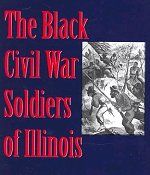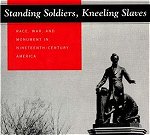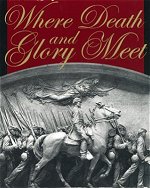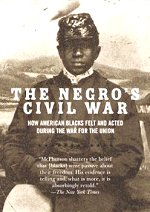|
|
|
|
 The Sable Arm: Black Troops in the Union Army, 1861-1865 The first work to fully chronicle the remarkable story of the nearly 180,000 black troops who served in the Union army. This work paved the way for the exploration of the black military experience in other wars. This edition, with a new foreword by Herman Hattaway and bibliographical essay by the author, makes available once again a pioneering work that will be especially useful for scholars and students Colored Troop Books |
 |
The 1st Kansas Colored Infantry Regiment achieved an excellent combat record during the Civil War, and it also performed garrison, engineer, and escort duty. The Regiment saw action at:
|
Union officers recognized the excellent combat reputation of the 1st Kansas Colored Volunteer Infantry Regiment: Major General James G. Blunt--July 26, 1863:
Lt. Colonel John Bowles--July 20, 1863:
Brigadier General John McNeil--November 2, 1863:
Colonel James M. Williams--April 24, 1864:
|
Colored Troops
Colored Troops Pictures
African American Timeline
American Civil War Exhibits
Women in the War
Civil War Cooking
Kids Zone Underground Railroad
Kids Zone Causes of the War
Dred Scott Decision
Benjamin Oliver Davis First Colored U.S. General
 The Black Civil War Soldiers of Illinois: The Story of the Twenty-Ninth U.S. Colored Infantry Study in the lives of black recruits in the Civil War era, and a journey into the hinterlands of an American racial pathos. Throughout this study, Miller explores in detail the biographies of individual soldiers, revealing their often convoluted histories |
 Standing Soldiers, Kneeling Slaves The United States of America originated as a slave society, holding millions of Africans and their descendants in bondage, and remained so until a civil war took the lives of a half million soldiers, some once slaves themselves. |
 Where Death and Glory Meet: Colonel Robert Gould Shaw and the 54th Massachusetts Infantry July 18, 1863, the African American soldiers of the Fifty-Fourth Massachusetts Infantry led a courageous but ill-fated charge on Fort Wagner, a key bastion guarding Charleston harbor. Confederate defenders killed, wounded, or made prisoners of half the regiment. Only hours later, the body of Colonel Robert Gould Shaw, the regiment's white commander, was thrown into a mass grave with those of twenty of his men. |
Kindle Available The Negro's Civil War: How American Blacks Felt and Acted During the War for the Union In this classic study, Pulitzer Prize-winning author James M. McPherson deftly narrates the experience of blacks--former slaves and soldiers, preachers, visionaries, doctors, intellectuals, and common people--during the Civil War |
Taylor was born a slave in 1848 on an island off the coast of Georgia. She gained her freedom and worked as a laundress for an African-American Union regiment during the war. Taylor recalls how she learned to read and write and then herself became a teacher. She offers fascinating details about her life with the troops. She had many different duties beyond laundry service. I loved the episode where she recalls concocting "a very delicious custard" from turtle eggs and canned condensed milk, and serving it to the troops. Taylor condemns the lack of appreciation shown for both black and white Civil War veterans. She also condemns early 20th century racism. Reading her book I was reminded of W.E.B. Du Bois' classic "The Souls of Black Folk," which was first published around the same time; I think the two books complement each other well. Taylor ends on a note of hope and pride, noting "my people are striving" for better lives. This book is, in my opinion, an important milestone in African American literature.
|
Sources:
U.S. National Park Service
U.S. Library of Congress.
|
Books Civil War Womens Subjects Young Readers Military History DVDs Confederate Store Civil War Games Music CDs Reenactors |